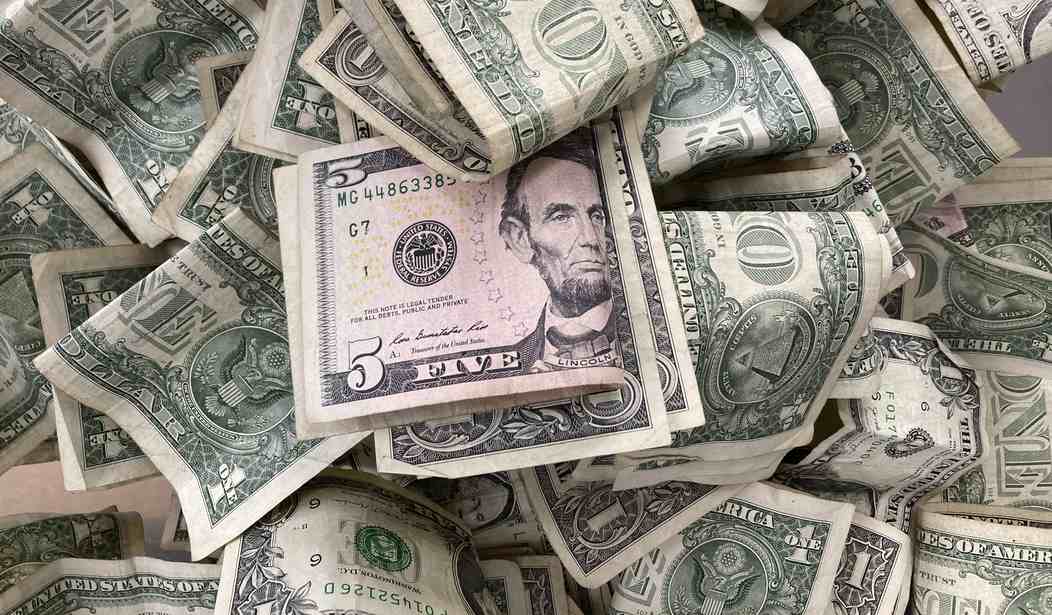With all the problems America is facing, the one that gets the least attention might be the most critical. The speed at which the United States will hit the wall of an insolvency crisis and collapse is approaching very fast.
The U.S. is currently spending more than $2 billion a day to service its debt, and that interest we pay on servicing the national debt is the fastest growing part of the federal budget. It will likely exceed the entire defense budget within a year. The constructive law of compound interest has been turned upside-down and we are now on a downward spiral of escalating compound debt and interest payments, wherein the U.S. government is locked into borrowing ever more money to pay the interest on new and previous debt obligations.
In the context of our history this has happened extremely fast. Just two decades ago, the U.S. national debt stood at about $4 trillion, which was at that time 36% of our GDP. Today, U.S. national debt is $34.2 trillion, which is about 126.5% of U.S. GDP—an increase of 755% in just twenty years.
What is the significance of the debt-to-GDP ratio? After the dollar was taken off the gold standard—which is to say no longer backed by gold—in 1933, it became a “fiat” currency backed only by the full faith and credit of the U.S. government and the economy of the country. GDP replaced gold as a measure of aggregate assets backing the currency. And the same is true for all countries as fiat currencies are now almost universal.
Most people cannot grasp numbers in the trillions.
Recommended
The height of a stack of 1,000,000,000,000 (one trillion) one-dollar bills measures 67,866 miles—more than a fourth of the way from the earth to the moon. The length of 1,000,000,000,000 (one trillion) one-dollar bills laid end-to-end measures 96,906,656 miles—more than the distance from the earth to the sun. With national debt at $34 trillion, one need only multiply the above numbers by thirty-four to get the actual number of miles in a stack and in an end-to-end continuum of one-dollar bills in distance equivalent to our national debt. On a relative basis, the $34 trillion of U.S. national debt is roughly the size of the economies of China, Germany, Japan , India, and the United Kingdom combined.
While the enormous size of U.S. debt may be worrisome on an absolute basis, what is more alarming is the simple fact that U.S. debt is growing much faster than the U.S. GDP economy. The long-term growth rate of the U.S. economy used to be above 3% and average debt was often growing at a slower rate than the economy. The eight years of the Obama administration were characterized by increased government spending and debt issuance and persistent slow economic growth. In 2016 the head of the San Francisco Federal Reserve, John Williams, commented that he believed previous growth on a sustained basis was “not possible anymore.” At that time Fed policymakers cut their median long-term GDP growth outlook to 1.8%.
Slow economic growth with higher debt growth rates accelerates America’s day of reckoning. Let’s concede that the U.S. economy could grow at a sustained average growth rate of 2% and that total national debt growth rates stay constant at its current rate of 8% (instead of a likely higher growth rate). In just nine years, U.S. national debt would double to $68.4 trillion, while a GDP growth rate of 2% starting at the current level of $27 trillion would grow to about a $32.25 trillion economy. That would increase the U.S. debt-to-GDP ratio from its current 126.5% to over 210%.
With the current trends of economic and debt growth, the United States does not have the luxury of nine years, but seems destined run into serious financial problems within the next few years. First, it is likely that Moody’s will join S&P and Fitch in downgrading U.S. Government debt from AAA to AA. Second, when the U.S. government debt-to-GDP ratio climbs to 140-150% within a few years, the U.S. could easily be downgraded to single A and borrowing costs would go up further. Third, the introduction of the new BRICS currency erodes the U.S. dollar’s position as the world’s reserve currency. As a result, central banks around the world will reduce their U.S. dollar reserves—decreasing the global demand for dollars, weakening the dollar in exchange markets, putting inflationary pressure on the dollar,and negatively affecting the U.S. credit rating.
The financing cost of combined debt increase and credit rating downgrades will soon exceed $1 trillion annually. Another serious driver of looming insolvency is the widening gap between the cost of rising debt service and the anemic tax-base growth from a low growth economy. A recession—increasingly likely to commence in the second half of 2024—could radically reduce tax revenues and provide the catalyst for a crisis of confidence in the U.S. dollar.
The big unknown in the face of a deteriorating and impaired balance sheet of the United States is who will purchase America’s refinancing of existing and new debt issuance. While the Federal Reserve has helped monetize U.S. debt in the past, it is unlikely to run the risk of excessive monetization, which the markets would interpret as a government debt soft default. The perception of a soft default will cause debt service rates to rise, potentially triggering a downward-spiraling liquidity crisis ending with the U.S. government being unable to finance all its obligations—a hard default.
What to do to about this impending crisis? Fortunately, this being an election year, a major collapse is unlikely as that would be blamed on the primary party in power.
The Biden administration and the Democrat Party have mismanaged the southern border, inflation and the economy, and the issues of equal justice, law, and order so completely that there is a real opportunity for an unprecedented political realignment in November
The Republicans have a much larger stable of solid candidates committed to saving the country in all the key areas of voter concern. With the wind at their back on issues, they need only concentrate on effective messaging, getting out the vote, and mitigating vote fraud to guarantee victory in November.
Scott Powell is an economist and senior fellow at Discovery Institute, and a member of the Committee on the Present Dange China. His timeless book, Rediscovering America, was #1 Amazon New Release in the history genre for eight weeks. (https://www.amazon.com/dp/1637581599). Reach him at scottp@discovery.org

























Join the conversation as a VIP Member